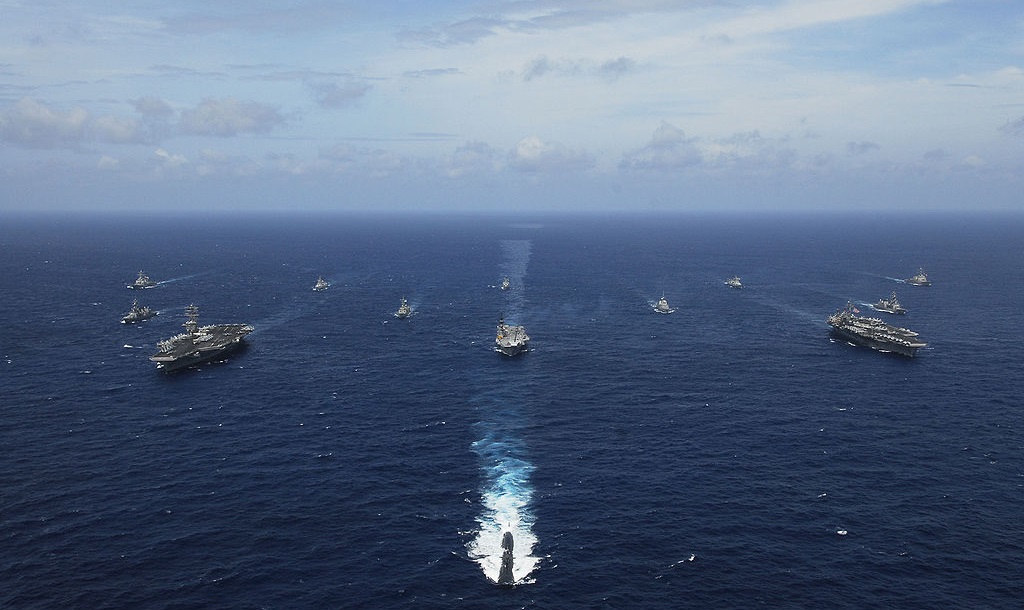If PRC is not a garrison state, then, why is she enhancing her military capabilities extensively along with her economic hegemony? The message is clear that a West led coalition must lethally build up stronger military hegemony on the trading zones in the Indo-Pacific. Should the US use coordinated action with allies to confront PRC’s trade malpractices while simultaneously expanding plurilateral free trade agreements to accelerate US economic growth?[1] Or does the US need to go back to isolationism? How significant is the America First doctrine since Trump left the White House? It was seen that in prior to WWII that the US fell behind to secure Asia and Europe until it left isolationism. If, so, the US new administration should regain her place on the world stage as she is the only power to lead the new world order allied with the UK, Australia, India, Japan and so on. Putting PRC at the place of a strategic competitor[2] is the right timely step of the US administration. And in such a phase, PRC is needed to be deterred security-wise.

This file is a work of a sailor or employee of the U.S. Navy, taken or made as part of that person’s official duties. As a work of the U.S. federal government, it is in the public domain in the United States.
Naval vessels from the US, Japan, India, Australia and Singapore take part in Malabar Exercise in the Bay of Bengal in 2007
Greater strategic supremacy will allow gaining trading dominance in the Indo-Pacific region where the Strait of Malacca[3] and the South China Sea have major trading supplies of the world which economically rising superpower PRC wants to secure and control.[4] About 1.5 million worth of goods flows annually from Europe to Indo-Pacific markets. The EU is the second-largest trading partner, and also the largest investor in the Southeast Asian bloc ASEAN. Five of the ten ASEAN nations – Vietnam, the Philippines, Malaysia, Brunei and Indonesia – surround the South China Sea, and have claims or maritime boundaries that join PRC.[5] It is also a geographical realism that to stalemate PRC’s aggressive strategy, India is the only country that can be counted in the Asian region to be utilized under the US leadership. All these realities forced the US to reconfigure her orders and designate the Indian Ocean and the Pacific as an entity, the Indo-Pacific region. Accordingly, the US has relocated 60 percent of its worldwide war assets to the Asia-Pacific region.[6] As the US and PRC trade is still on,[7] and with the new strategic phase to deal PRC, it is rigorously required that the US secure her trade interest. And, in order to do so, there would be no other option than a US-led coalition to grow strategic might, and dominate commercially the most important Indo-Pacific region.
PRC has been rapidly improving her military structure and capabilities over the past two decades. For the USA, China is leveraging military modernization, influence operations, and predatory economics to coerce neighbouring countries to reorder the Indo-Pacific region to her advantage.[8] In an unclassified summary of the National Defense Strategy 2018, the US Department of Defense said China is a strategic competitor using predatory economies to intimidate its neighbours while militarizing features in the South China Sea.[9] PRC often does not announce military progress; a new aircraft carrier has been deployed in the Pacific Ocean, equipped with the best offensive kilo-class submarines, and destroyers equipped with guided missiles.[10] The US Department of Defense finds to admit that PRC’s defence modernization over the past twenty years has put her forces capabilities “ahead of the United States” in areas such as Integrated Air Defense Systems, and land-based conventional and ballistic missiles.[11] It is needed to see whether the Biden administration realistically take bigger resilient measures to credibly challenge and subdue PRC’s rising mastery, and regain the US global leadership with new world order.
The above article is written by Syed Tanvir Yousuf, Security Analyst. MA in Intelligence and Security Studies, England. Former Security Program Officer, Canadian High Commission
[1] Ashley J. Tellis, eds, ‘U.S.-China Competition for Global Influence’, Strategic Asia, Seattle and Washington DC, The National Bureau of Asian Research, 2019, p. 2, https://carnegieendowment.org/files/SA_20_Tellis.pdf, (accessed 21 April, 2021).
[2] J Mattis, ‘Summary of the National Defense Strategy of the United States of America’, Sharpening the American Military’s Competitive Edge, Department of Defense, https://dod.defense.gov/Portals/1/Documents/pubs/2018-National-Defense-Strategy-Summary.pdf, 2018, p. 3, (accessed 21 April, 2021).
[3] Tomas Hirst, ‘The world’s most important trade route?’, Cologny/Geneva, World Economic Forum, 2018, https://www.weforum.org/agenda/2014/05/world-most-important-trade-route/, (accessed 21 April, 2021)
[4] China Power Project, ‘How Much Trade Transits the South China Sea?,’ Washington DC, Center for Strategic and International Studies, https://chinapower.csis.org/much-trade-transits-south-china-sea/, (accessed 21 April 2021).
[5] Ibid
[6] RSN Singh, ‘Spare no weapons when it comes to existential crisis’, Indian Defense Review, 2020, http://www.indiandefencereview.com/news/spare-no-weapon-if-doklam-poses-existential-crisis/, (accessed 21 April, 2021).
[7] Sara Hsu, ‘The US-China Trade War Is Still Happening’, Trans-Pacific View, The Diplomat, 2021, https://thediplomat.com/2021/03/the-us-china-trade-war-is-still-happening/, (accessed 21 April, 2021)
[8] J Mattis, ‘Summary of the National Defense Strategy of the United States of America’, Sharpening the American Military’s Competitive Edge, Department of Defense, https://dod.defense.gov/Portals/1/Documents/pubs/2018-National-Defense-Strategy-Summary.pdf, 2018, p. 4, (accessed 21 April, 2021).
[9] https://dod.defense.gov/Portals/1/Documents/pubs/2018-National-Defense-Strategy-Summary.pdf
[10]Michael S. Chase, Cristina L. Garafola, and Nathan Beauchamp-Mustafaga, ‘Chinese Perceptions of and Responses to US Conventional Military Power’, Tailor Francis Online, Asian Security, 2017, pp. 1–19 https://www.tandfonline.com/doi/abs/10.1080/14799855.2017.1301931, (accessed 21 April, 2021)
[11] Department of Defense, ‘Military and Security Developments Involving the People’s Republic of China’, Annual Report to Congress, Washington DC, Office of the Secretary of Defense, 2020, p. i–ii, https://media.defense.gov/2020/Sep/01/2002488689/-1/-1/1/2020-DOD-CHINA-MILITARY-POWER-REPORT-FINAL.PDF, (21 April 2021)


